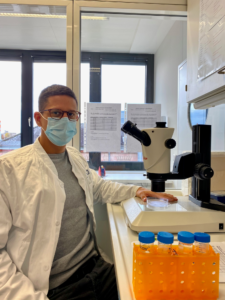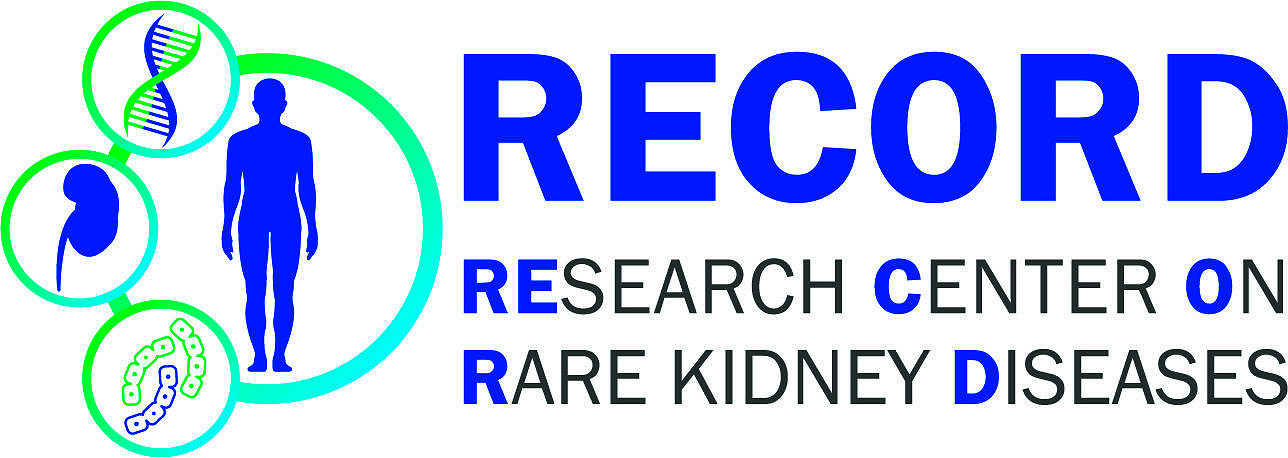 Untersuchung von zirkulierenden Permeabilitätsfaktoren bei idiopathischer FSGS im Zellkultur- und Zebrafischmodell
Untersuchung von zirkulierenden Permeabilitätsfaktoren bei idiopathischer FSGS im Zellkultur- und Zebrafischmodell
„Im Rahmen des RECORD-Programmes arbeite ich in der Arbeitsgruppe von Herrn Prof. Dr. Schiffer grundsätzlich an proteinurischen Nierenerkrankungen. Hierbei richtet sich meine Aufmerksamkeit auf ein spezielles Forschungsmodell, welches sich einer besonderen Fischart, den so genannten Zebrafischen bedient. Bereits in jüngerer Vergangenheit wurden von meinen Arbeitskollegen unter der Leitung von Frau Prof. Dr. Müller-Deile unterschiedlichste Hypothesen auf Basis des Zebrafisch-Modells erfolgreich untersucht und veröffentlicht. Durch die Arbeit mit diesem flexiblen Modell erhoffe ich mir, zukünftig einen Beitrag am wissenschaftlichen Vorankommen in Bezug auf nephrologische Fragestellungen leisten zu können.“
Wissenschaftliches Arbeitsprogramm (Abstract)
In the last decades, incidence of primary, non-genetic focal-segmental glomerulosclerosis (FSGS) has increased substantially ( Hommos, De Vriese et al. 2017). Concerning primary nephrotic diseases, FSGS as the underlying pathology is most likely to lead to end stage renal disease (Rosenberg and Kopp 2017), accounting for up to 4% of all patients with ESRD in the United States (Fogo 2015). It is believed that circulating permeability factors could play a key role in developing distinct podocyte damage patterns that cause podocyte effacement, ultimately leading to fully developed primary FSGS (Rosenberg and Kopp 2017). In this matter, several studies have identified putative circulating factors like soluble urokinase-type plasminogen activator receptor (suPAR), cardiotrophin like cytokine factor 1 (CLCF-1) and active cathepsin L, but their pathophysiological role is still debated (Sever, Altintas et al. 2007, McCarthy, Sharma et al. 2010, Wei, El Hindi et al. 2011). In this project, we want to further characterize the role of cathepsin L and its potential proteinuria-inducing effect by injecting different concentrations of cathepsin L cRNA into single transgenic zebrafish larvae that express a green fluorescent Vitami n D binding protein (Tg(I fabp:eGFP DBP)) which roughly resembles the size of albumin. Therefore, loss of fluorescent vitamin D binding protein in zebrafish circulation could be a hint for proteinuria. After injecting a cathepsin L cRNA concentration into zebrafish eggs which is intended to elicit proteinuria, we will try to reverse the effect by injection of a cysteine protease inhibitor, ruling out other possible effects on proteinuria that are not mediated by cathepsin L itself. By successfully establishing a shared circulation system between two zebrafish larvae and inducing glomerular damage in both parabiotic partners even though only one zebrafish partner was genetically manipulated, it was shown that a parabiosis model can be used to investigate effects of circulating factors on glomerular function (Müller Deile, Schenk et al. 2019). We will use this parabiosis model to overexpress cathepsin L in one zebrafish before fusing it to another zebrafish that overexpresses cleavage resistant dynamin. We expect glomerular damage to happen in the cathepsin L injected zebrafish partner only, whereas effects of circulating cathepsin L should be averted in the zebrafish partner that expresses cleavage resistant dynamin.
Furthermore, we want to investigate the effects of circulating permeability factors on podocytes by injecting serum from patients with non-genetic primary FSGS into zebrafish 48 hours afterafter spawning. Concentrations of cathepsin L will be measured and correlated with both proteinuria and the degree of foo process effacement in biopsies of respective patients. By further correlating cathepsin L concentrations with loss of plasma proteins after injection of patient sera int zebrafish circulation, we hope to establish a novel and personalized, non-invasive diagnostic tool for early diagnosis of primary FSGS.
